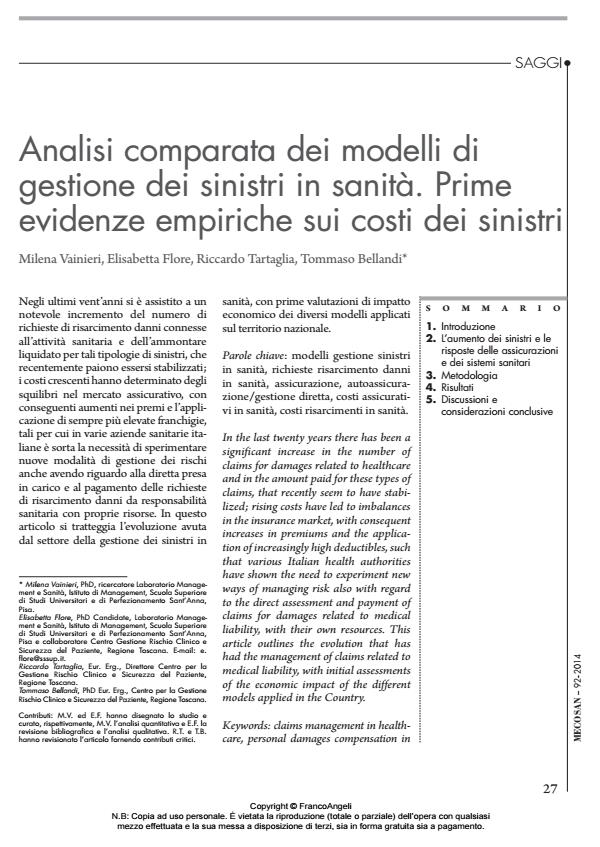Analisi comparata dei modelli di gestione dei sinistri in sanità. Prime evidenze empiriche sui costi dei sinistri
Journal title MECOSAN
Author/s Milena Vainieri, Elisabetta Flore, Riccardo Tartaglia, Tommaso Bellandi
Publishing Year 2015 Issue 2014/92
Language Italian Pages 27 P. 27-53 File size 1334 KB
DOI 10.3280/MESA2014-092003
DOI is like a bar code for intellectual property: to have more infomation
click here
Below, you can see the article first page
If you want to buy this article in PDF format, you can do it, following the instructions to buy download credits

FrancoAngeli is member of Publishers International Linking Association, Inc (PILA), a not-for-profit association which run the CrossRef service enabling links to and from online scholarly content.
In the last twenty years there has been a significant increase in the number of claims for damages related to healthcare and in the amount paid for these types of claims, that recently seem to have stabilized; rising costs have led to imbalances in the insurance market, with consequent increases in premiums and the application of increasingly high deductibles, such that various Italian health authorities have shown the need to experiment new ways of managing risk also with regard to the direct assessment and payment of claims for damages related to medical liability, with their own resources. This article outlines the evolution that has had the management of claims related to medical liability, with initial assessments of the economic impact of the different models applied in the Country.
Keywords: Claims management in healthcare, personal damages compensation in healthcare, insurance, auto-insurance/ direct management, healthcare insurance costs, compensation costs in healthcare
- Tricky choices between short or long-term financial sustainability: cost allocation for medical malpractice claims in Italy Milena Vainieri, Andrea Vandelli, Davide Trinchese, in Cogent Business & Management 2423894/2024
DOI: 10.1080/23311975.2024.2423894 - Risk Management Sanitario: governo dei rischi e coperture assicurative nel welfare italiano Roberto Coviello, Carmine D'Antonio, in Journal of Advanced Health Care /2019
DOI: 10.36017/JAHC1909-001
Milena Vainieri, Elisabetta Flore, Riccardo Tartaglia, Tommaso Bellandi, Analisi comparata dei modelli di gestione dei sinistri in sanità. Prime evidenze empiriche sui costi dei sinistri in "MECOSAN" 92/2014, pp 27-53, DOI: 10.3280/MESA2014-092003